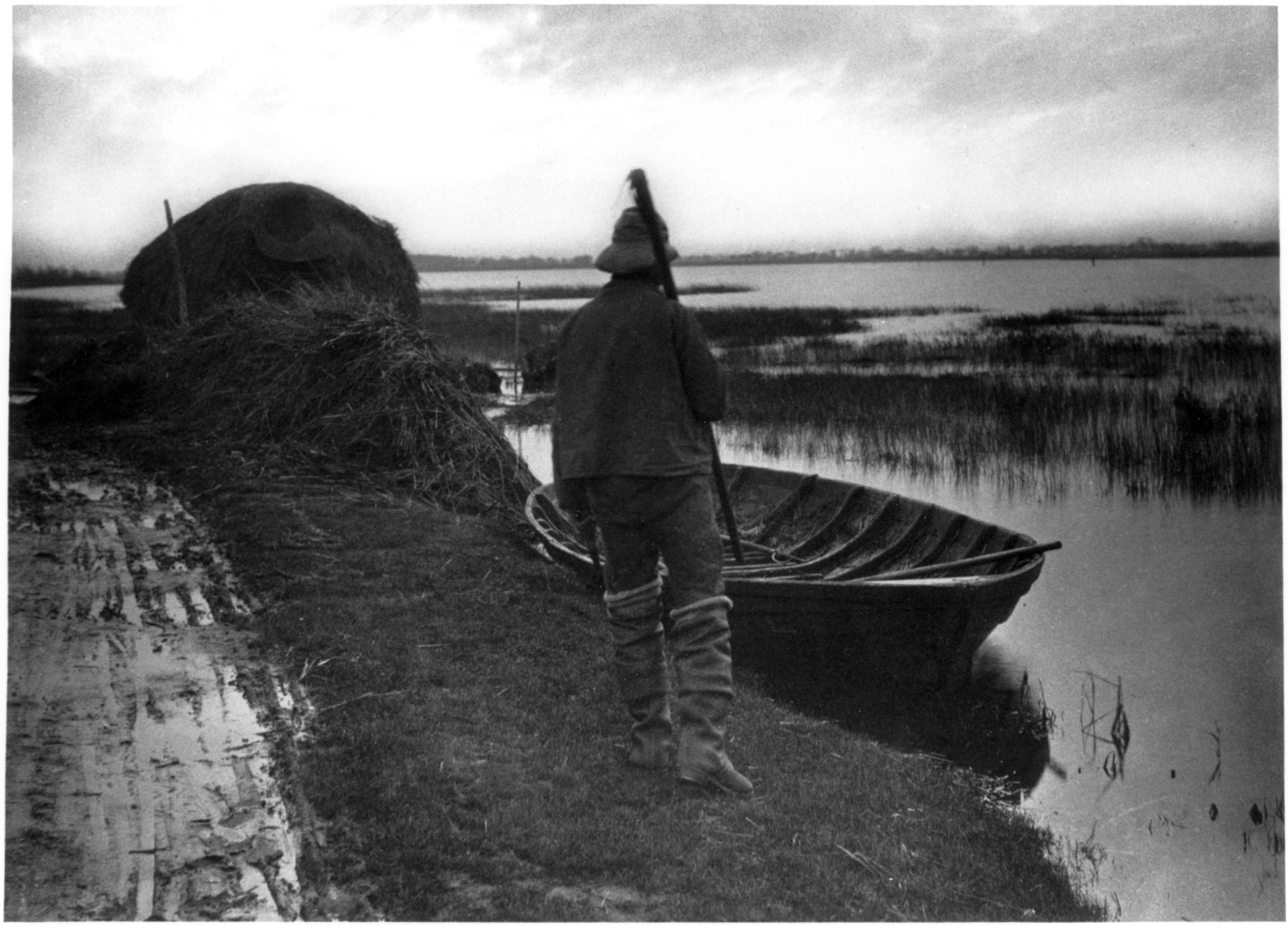Peter Henry Emerson
(Sagua La Grande, Cuba, 1856 - 1936, Falmouth, Cornwall, England)
Marsh Man Going to Cut Schoof-Stuff
1886
Platinum print
8 x 11 1/4 in. (20.3 x 28.7 cm)
Collection of the Akron Art Museum
Museum Acquisition Fund
1988.11
More Information
For nearly a decade, Emerson navigated the marshes and dikes of the Norfolk Broads (a coastal region in southeastern England) on a houseboat, documenting the labor-filled lives of the area's rural inhabitants, such as this farmer gathering reeds. Trained as a physician and aiming to make a completely objective record, Emerson manipulated the focus of his photographs in accordance with a popular scientific theory of optical perception. Ironically, the soft focus and luminous tonality of his images seem distinctly dreamy and romantic to contemporary viewers. An advocate of "naturalistic" photography, Emerson did not believe that posing his shots (a practice in part necessitated by the slow speed of film at the time) violated their truthful nature. This idyllic scene of manual labor and rural life was produced at a time when many of the British were moving to the cities to find industrial jobs.
Keywords
MarshMale
British
Photography
Boat

